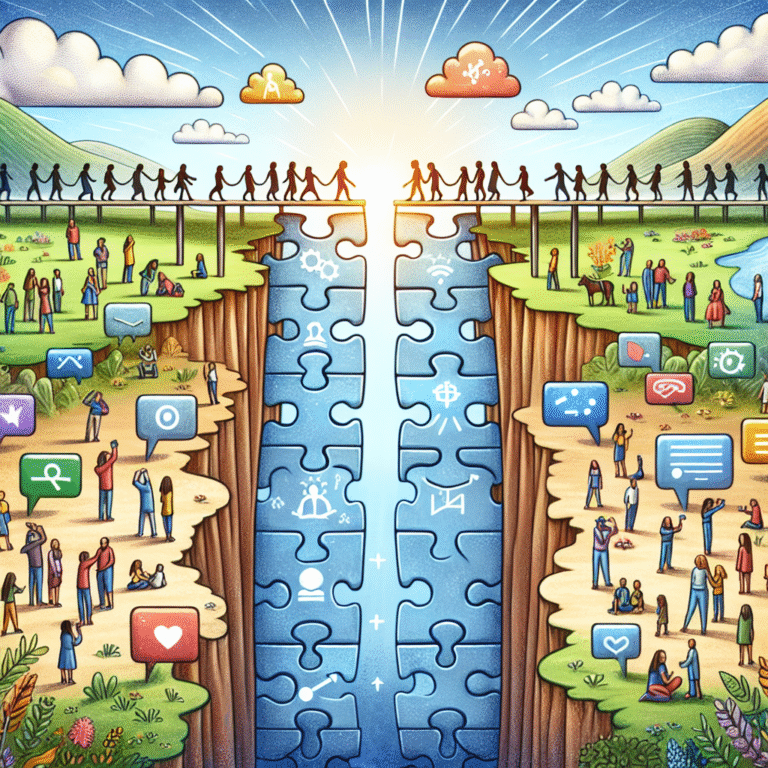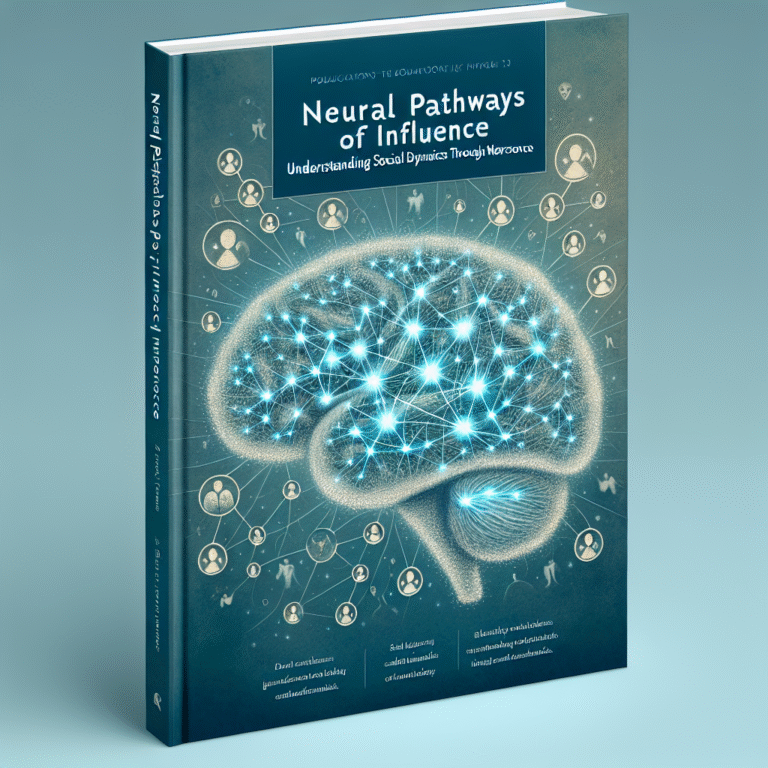Introduction
In our increasingly interconnected world, the ability to understand and share the feelings of others seems more essential than ever. Empathy in Action: What Social Neuroscience Teaches Us About Connections sheds light on the intricate mechanisms that underpin human connection. Recent research in social neuroscience reveals not just the neurological foundations of empathy, but also how this understanding can be put into practice for better relationships, workplaces, and communities.
Think of a world where empathy reigns—where individuals can relate to each other’s experiences, share emotions, and foster an environment of mutual respect. This is not just a lofty ideal; it is a tangible reality that emerges when we delve into the science behind empathy. Let’s explore what social neuroscience teaches us about our capacity for connection.
The Neuroscience of Empathy: Understanding the Brain
Mirror Neurons: The Empathy Mechanism
At the core of our empathetic behavior lies a specialized group of neurons known as mirror neurons. Discovered in the early ’90s in macaque monkeys, these neurons fire both when we perform an action and when we observe someone else performing that same action. This neurological phenomenon forms the biological basis for empathy, allowing us to "mirror" the emotional states of others.
Case Study: The Compassion Experiment
A notable study conducted at the University of California, Los Angeles, explored the brain activity of participants as they observed others undergoing emotional experiences. When witnessing distress, participants showed increased activation in their mirror neuron systems, suggesting that empathy is not merely a cognitive process but also a visceral one.
Relevance Analysis: This case underscores the biological underpinnings of empathy, emphasizing that feeling connected is hardwired into our brains. The findings have crucial implications for understanding social behavior and enhancing interpersonal connections.
Emotional Contagion: The Ripple Effect
Emotional contagion refers to the phenomenon where individuals "catch" the emotions of others. This process can occur unconsciously, as we are constantly interpreting social cues like facial expressions and body language. Social neuroscience indicates that empathy isn’t just an isolated emotional experience; it has a tangible impact on group dynamics.
Table 1: Emotional Contagion Across Different Social Contexts
| Context | Emotional Outcome | Example |
|---|---|---|
| Workplace | Decreased productivity | Toxic work culture |
| Family | Increased bonding | Support through grief |
| Community Events | Heightened collective joy | Festivals and gatherings |
Relevance Analysis: The table illustrates how empathy cascades through social contexts, influencing our emotional climate. Recognizing emotional contagion enables us to create environments that foster positivity.
Empathy in Action: Practical Applications
Building Connections in the Workplace
Incorporating empathy into workplace culture can lead to transformative results. Research from Harvard Business Review demonstrates that leaders who exhibit empathy foster greater employee satisfaction and productivity.
Case Study: Zappos’ Culture of Connection
Zappos, renowned for its unparalleled customer service, operates on a foundation of empathy. The company encourages employees to connect deeply with customers, shaping a unique and supportive company culture. Zappos’ success illustrates that empathy in action can drive both employee engagement and business outcomes.
Relevance Analysis: Zappos exemplifies how prioritizing empathy can enhance team cohesion. By embedding empathy into their operational framework, they create lasting connections internally and externally.
Empathy in Education: Creating Safe Learning Environments
Education systems that emphasize social-emotional learning (SEL) are reporting higher academic success rates and improved student interactions. Social neuroscience highlights how empathetic classrooms facilitate student collaboration and reduce bullying.
Table 2: Impact of SEL on Student Dynamics
| Metric | Improvement |
|---|---|
| Conflict resolution | 40% increase |
| Academic performance | 20% improvement |
| Student satisfaction | 30% higher |
Relevance Analysis: The table showcases quantifiable benefits of integrating empathy into education. Schools that prioritize empathy create safer, more effective learning environments and ultimately cultivate emotionally intelligent future leaders.
Community Connections and Empathy
Empathy transcends individual relationships—it is the glue that holds communities together. Various studies highlight how empathetic engagement can combat social isolation and foster greater civic participation.
Case Study: The "Empathy Museum"
The Empathy Museum in London engages its visitors in unique, immersive experiences designed to encourage understanding across diverse communities. Through installations that simulate others’ experiences, visitors confront their biases and deepen their connections.
Relevance Analysis: This case highlights the transformative potential of empathy in fostering community connections. By experiencing others’ realities, individuals are more likely to engage in supportive actions, demonstrating that empathy can catalyze social change.
The Role of Technology in Empathy
Digital Empathy: Bridging the Gap
For all its faults, technology has the power to enhance empathy. Virtual reality (VR) experiences have been developed to cultivate understanding by allowing users to "walk in someone else’s shoes."
Case Study: "Project Syria"
A VR project called "Project Syria" immerses users in real-life Syrian refugee experiences. This powerful tool has amplified awareness and fueled humanitarian responses, illustrating that technology can deepen our empathetic connections.
Relevance Analysis: Technology, when employed thoughtfully, can create impactful experiences that enhance emotional understanding. This demonstrates that empathy can be harnessed to address pressing global issues.
Challenges to Empathy: Obstacles on the Path to Connection
Compassion Fatigue and Burnout
Acknowledging the importance of empathy also brings challenges. Fields like healthcare and social work often experience compassion fatigue, where exposure to suffering leads to emotional exhaustion.
Decreasing Face-to-Face Interaction
As social interactions shift increasingly online, there is a concern that digital communication can dilute the richness of empathic engagement, potentially leading to emotional disconnect.
Strategies for Cultivating Empathy
Mindfulness and Emotional Intelligence
Mindfulness practices encourage individuals to become more aware of their own emotions, refining their ability to interpret and respond to others’ feelings.
Active Listening Techniques
Practicing active listening—being fully present, acknowledging feelings, and resisting the urge to respond immediately—can significantly enhance our empathetic capabilities.
Conclusion: Empathy as the Heartbeat of Human Connection
Empathy in Action: What Social Neuroscience Teaches Us About Connections shines a light on the profound importance of empathy. It serves as a guiding principle for enriching relationships, workplaces, and communities. Understand that nurturing connections requires intentionality and awareness.
As we bridge gaps using empathetic approaches, we not only elevate our own lives but also contribute to a more harmonious society. Here’s a simple takeaway: the next time you encounter someone’s struggle, pause and consider—their experience could be your own. Frame your interactions through the lens of empathy, and witness the profound changes that unfold.
FAQs
1. What is empathy, and why is it essential?
Empathy is the ability to understand and share the feelings of another. It’s essential because it fosters strong emotional connections, leading to supportive relationships and improved communication.
2. How can I practice empathy in my daily life?
You can practice empathy by actively listening to others, placing yourself in their shoes, and responding with compassion to their experiences.
3. How does technology impact empathy?
While technology can cultivate empathetic connections through immersive experiences, it can also dilute them if interactions heavily rely on digital communication.
4. What are some common barriers to empathy?
Common barriers include emotional fatigue from constant exposure to others’ suffering, unconscious biases, and a lack of awareness of others’ struggles.
5. How can communities promote empathy?
Communities can promote empathy through initiatives that foster dialogue, encourage active participation in social issues, and provide educational programs centered on social-emotional learning.
In wrapping up our exploration of Empathy in Action: What Social Neuroscience Teaches Us About Connections, remember that cultivating empathy is a continuous journey. As we strive for deeper connections, we pave the way for enriched lives and stronger communities. Your actions today can create ripples of understanding tomorrow.











